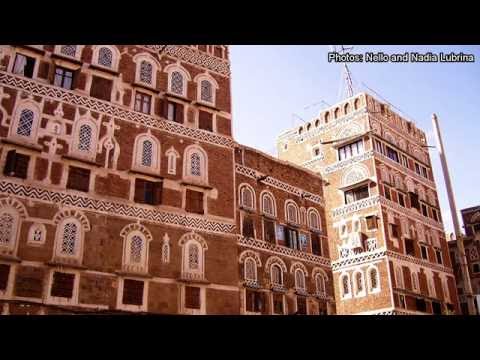
Sana’a, the capital city of Yemen, is one of the oldest continuously inhabited cities in the world. With its ancient roots stretching back more than 2,500 years, Sana’a is a city steeped in history, culture, and architectural marvels. Located in a mountain valley at an altitude of 2,300 meters, it offers not only an escape from the desert climate typical of the region but also a window into Yemen’s rich past.
#### Historical Overview
The origins of Sana’a trace back to the Sabean dynasty, which ruled around the 6th century BC. However, it was under the Islamic caliphates starting from the 7th century AD that Sana’a truly flourished as a major Islamic center. The city’s numerous mosques and madrasas date from this period, signifying its importance as both a spiritual and educational hub.
Throughout history, Sana’a has seen various ruling dynasties which have all left their mark on the city’s cultural and architectural heritage. The Ottomans and later the Imamate period under Zaydi rule further contributed to its urban landscape and societal structures.
#### Architectural Heritage
Walking through Old Sana’a is like stepping back in time. This part of the city is famed for its stunning array of multi-story rammed earth homes decorated with geometric patterns and stained glass windows – a style unique to Yemeni architecture. These towering structures are not only aesthetic marvels but also marvels of ancient engineering adapted perfectly to the high-altitude environment.
The old city has been recognized as a UNESCO World Heritage site since 1986 due to its well-preserved architecture that showcases domestic medieval Islamic buildings remarkably well. Iconic spots include Bab al-Yemen (the Gate of Yemen), which marks the traditional entrance to the old city; Al-Saleh Mosque, one of the largest and most modern mosques in Yemen; and numerous traditional suqs (markets) where one can feel the pulse of everyday Yemeni life.
#### Culture
Sana’a’s culture is deeply intertwined with its history. Traditional music, dance, and clothing are prominently showcased during various festivals throughout the year such as Eid al-Fitr and Eid al-Adha. Local handicrafts like intricate silverwork jewelry and hand-woven textiles reflect centuries-old skills that have been passed down through generations.
The cuisine in Sana’a is a delightful experience for any visitor; it offers an array of dishes flavored with spices such as cumin, coriander, turmeric, and cardamom. Popular local dishes include Saltah — considered by many as Yemen’s national dish — which is a meat-based stew topped with fenugreek froth served hot in stone bowls.
#### Contemporary Issues
Today’s Sana’a faces significant challenges amid ongoing conflict since 2014 which has had devastating impacts on its socio-economic fabric and infrastructure. Despite these hardships, its residents display incredible resilience while continuing traditions that have been alive for centuries.
Humanitarian concerns are significant due to war-related destruction exacerbating existing issues such as water scarcity — a critical problem given Sana’a’s location and climate conditions. International efforts aiming at conflict resolution are ongoing but face complex hurdles both locally and regionally.
#### Conclusion
Sana’a remains an emblematic symbol not just for its historical significance or architectural splendor but also for representing resilience amid adversity. As efforts continue to restore peace in Yemen, there remains hope that Sana’a might once again thrive as it did throughout history – not only preserving its monumental heritage but also paving forward paths for future prosperity reflective of its storied past.
